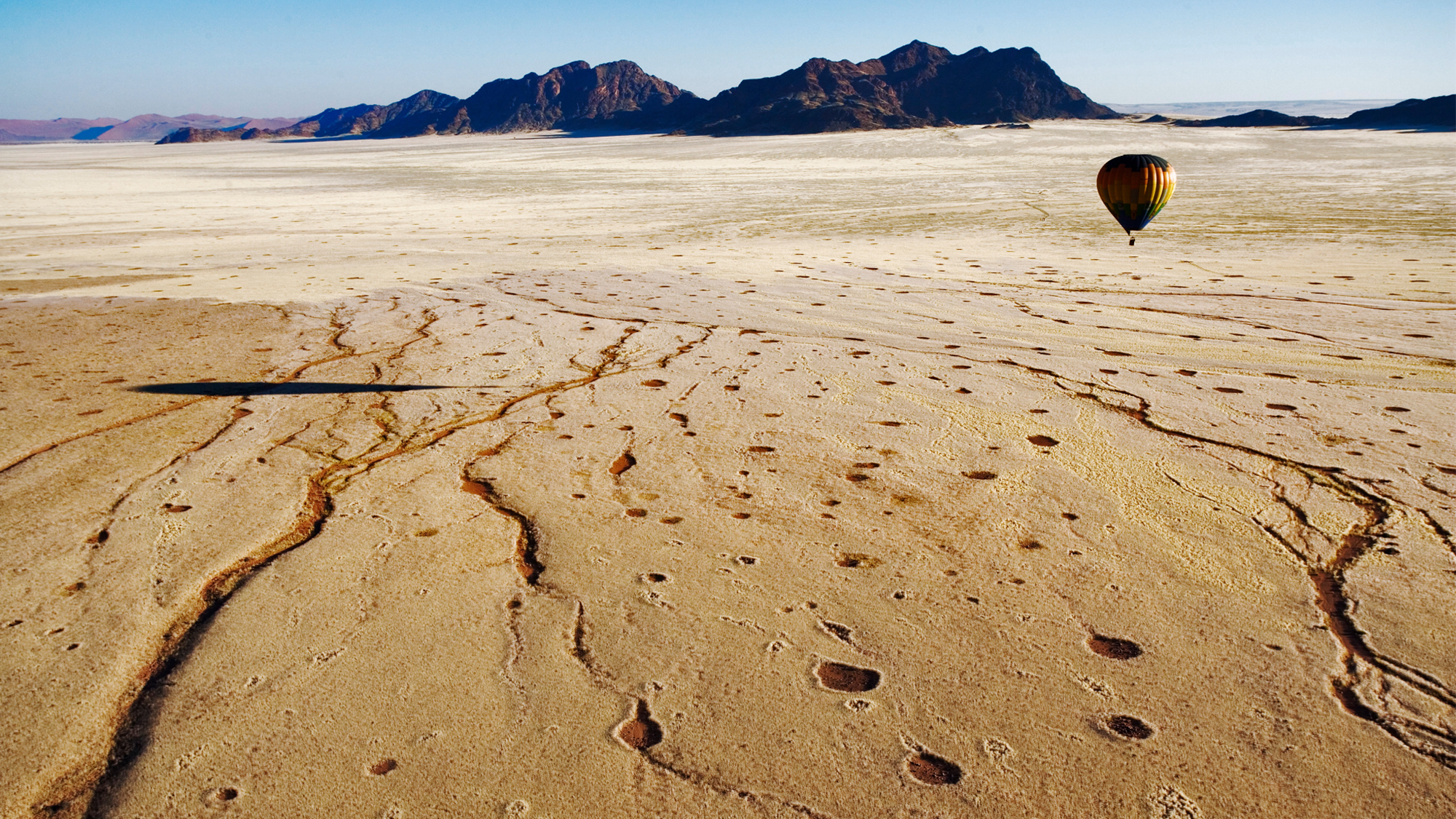

The natural circles that pop up on the soil in the planet’s arid regions are an enduring scientific debate and mystery. These “fairy circles” are circular patterns of bare soil surrounded by plants and vegetation. Until very recently, the unique phenomena have only been described in the vast Namib desert and the Australian outback. While their origins and distribution are hotly debated, a study with satellite imagery published on September 25 in the journal Proceedings of the National Academy of Sciences (PNAS) indicates that fairy circles may be more common than once realized. They are potentially found in 15 countries across three continents and in 263 different sites.
[Related: A new study explains the origin of mysterious ‘fairy circles’ in the desert.]
These soil shapes occur in arid areas of the Earth, where nutrients and water are generally scarce. Their signature circular pattern and hexagonal shape is believed to be the best way that the plants have found to survive in that landscape. Ecologist Ken Tinsly observed the circles in Namibia in 1971, and the story goes that he borrowed the name fairy circles from a naturally occurring ring of mushrooms that are generally found in Europe.
By 2017, Australian researchers found the debated western desert fairy circles, and proposed that the mechanisms of biological self-organization and pattern formation proposed by mathematician Alan Turing were behind them. In the same year, Aboriginal knowledge linked those fairy circles to a species of termites. This “termite theory” of fairy circle origin continues to be a focus of research—a team from the University of Hamburg in Germany published a study seeming to confirm that termites are behind these circles in July.
In this new study, a team of researchers from Spain used artificial intelligence-based models to look at the fairy circles from Australia and Namibia and directed it to look for similar patterns. The AI scoured the images for months and expanded the areas where these fairy circles could exist. These locations include the circles in Namibia, Western Australia, the western Sahara Desert, the Sahel region that separates the African savanna from the Sahara Desert, the Horn of Africa to the East, the island of Madagascar, southwestern Asia, and Central Australia.

The team then crossed-checked the results of the AI system with a different AI program trained to study the environments and ecology of arid areas to find out what factors govern the appearance of these circular patterns.
“Our study provides evidence that fairy-circle[s] are far more common than previously thought, which has allowed us, for the first time, to globally understand the factors affecting their distribution,” study co-author and Institute of Natural Resources and Agrobiology of Seville soil ecologist Manuel Delgado Baquerizo said in a statement.
[Related: The scientific explanation behind underwater ‘Fairy Circles.’]
According to the team, these circles generally appear in arid regions where the soil is mainly sandy, there is water scarcity, annual rainfall is between 4 to 12 inches, and low nutrient continent in the soil.
“Analyzing their effects on the functioning of ecosystems and discovering the environmental factors that determine their distribution is essential to better understand the causes of the formation of these vegetation patterns and their ecological importance,” study co-author and University of Alicante data scientist Emilio Guirado said in a statement.
More research is needed to determine the role of insects like termites in fairy circle formation, but Guirado told El País that “their global importance is low,” and that they may play an important role in local cases like those in Namibia, “but there are other factors that are even more important.”
The images are now included in a global atlas of fairy circles and a database that could help determine if these patterns demonstrate resilience to climate change.
“We hope that the unpublished data will be useful for those interested in comparing the dynamic behavior of these patterns with others present in arid areas around the world,” said Guirado.
